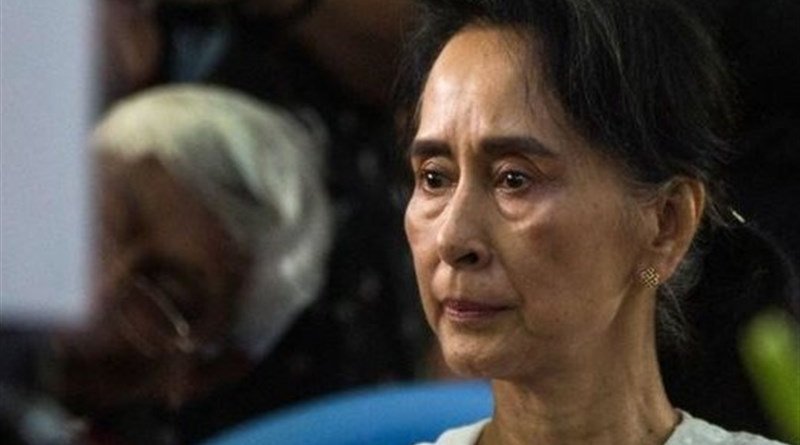India’s Future Oriented Strategy For A Post-Poll Myanmar – Analysis
By IPCS
By Sripathi Narayanan*
Weeks before Myanmar elects its new parliament and provincial assemblies on 8 November, India’s Army Chief, Gen MM Naravane, and Foreign Secretary, Harsh Vardhan Shringla, paid a two-day visit to the country (4-5 October). This was one of the rare instances of the Indian military and diplomatic establishments jointly advancing the country’s foreign policy priorities. Keeping in line with regular high-level engagements between New Delhi and Naypyidaw, the Indian delegation called on Myanmar’s State Counsellor, Daw Aung San Suu Kyi, and Tatmadaw Commander-in-Chief, Sr Gen Min Aung Hlaing. Gen Naravane also interacted with Myanmar’s Deputy Commander-in-Chief, Vice Sr Gen Soe Win, and the foreign secretary met with the Myanmar’s Permanent Secretary of the Ministry of Foreign Affairs, U Soe Han.
For India, the bilateral relationship is important for reasons that go beyond good neighbourliness. One, the India-Myanmar border region is a hotbed of militant/insurgent groups that pose security concerns to both countries. There also exists shared concerns over smuggling of contraband like narcotics and small arms by these militant groups and other players. Second, for New Delhi, Myanmar is not only a corridor of connectivity at the heart of its Southeast Asia outreach—‘Neighbourhood First Policy’ and ‘Act East Policy’—but is also relevant for developing India’s north-eastern regions.
The Visit
During the visit, both sides reviewed ongoing areas of engagement. As part of the effort to address the COVID-19 pandemic and as a display of New Delhi’s commitment to the neighbourhood, the Indian delegation presented a symbolic gift of 3,000 vials of Remdesivir to State Counsellor Suu Kyi. Myanmar expressed appreciation of India’s decision to provide debt service relief till the end of 2020, under the G-20 Debt Service Suspension Initiative.
The two sides also reviewed India-assisted projects like the Trilateral (India-Myanmar-Thailand) Highway; Trilateral Motor Vehicles Agreement; Kaladan Multi-Modal Transit Transport Project; Rakhine State Development Programme (RSDP); and finalising Phase III of the RSDP. New Delhi has committed a grant of US$2 million for the construction of border haats (markets), to help improve trade between India’s Mizoram and Myanmar’s Chin states. The two sides also discussed new initiatives like the upgradation of Yamethin Women’s Police Academy, Basic Technical Training School and the Myanmar Institute of Information Technology.
While the Sittwe Port in Rakhine State is expected to be operationalised in early 2021, the Centre of Excellence in Software Development and Training in Myitkyina was inaugurated virtually. On the power sector, the two sides discussed the possibility of High Capacity High Voltage Grid Interconnection. India has also proposed to construct a petroleum refinery at an estimated cost of US$6 billion in Thanlyn area, near Yangon.
Decoding the Visit
Being one of the few instances where the Indian army chief and the foreign secretary have jointly undertaken an overseas visit, the significance is not only about the composition but also the timing.
First, the upcoming election in Myanmar is important not only for stabilising the country’s nascent democracy but also for charting its future political trajectory. Under Myanmar’s constitutional and political framework, the November 2020 parliamentary polls will also set the stage for the indirect presidential election in March 2021—and thereby that of the next government.
Second, in Myanmar, a quarter of the seats in the national and provincial legislatures are reserved for representatives of the armed forces, who are nominated by the Tatmadaw chief. At the executive level, the defence, home and border affairs ministers are also appointed by the Tatmadaw. Given the military’s existing role in the affairs of the state, a split mandate in November could accentuate the role that the military could play in the shaping the future, including the presidential election next year.
Third, the incumbent Suu Kyi-led administration’s initiative to address the decades-old ethnic strife is still far from any meaningful resolution. As such, armed insurgent groups and a plethora of small ethnic political entities too would be watching the elections closely. In an event of a split mandate in the parliamentary polls, the Tatmadaw could play a key role, both on the matter of ethnic reconciliation and that of engaging ethnic political players.
Fourth, even though many in India view (for the right reasons) New Delhi’s engagement with Myanmar though the China prism, this visit has gone to reinforce the strength of bilateral ties between the two countries. Given the host of issues that were discussed, India’s ties with Myanmar are no longer limited to traditional processes but has taken the form of a joint military-diplomatic engagement. With regard to Myanmar, such an approach would not only insulate bilateral ties from possible domestic political shocks but would also go on institutionalise existing mechanisms to check against even external jolts in the future.
Much of the international community has held on to their adverse opinion about Myanmar from the days of the erstwhile junta, an opinion that was revived not long after their favourite leader, Suu Kyi, came to power, this time over the Rohingya issue. Given this backdrop, this military-diplomatic engagement following the 1 October bilateral foreign office consultations between Shringla and U Soe Han is not only a reiteration of India’s commitment to bilateral ties but also a reassurance to the north-eastern neighbour of continuing in the same mode, post polls.
*Dr. Sripathi Narayanan, can be reached at [email protected]

